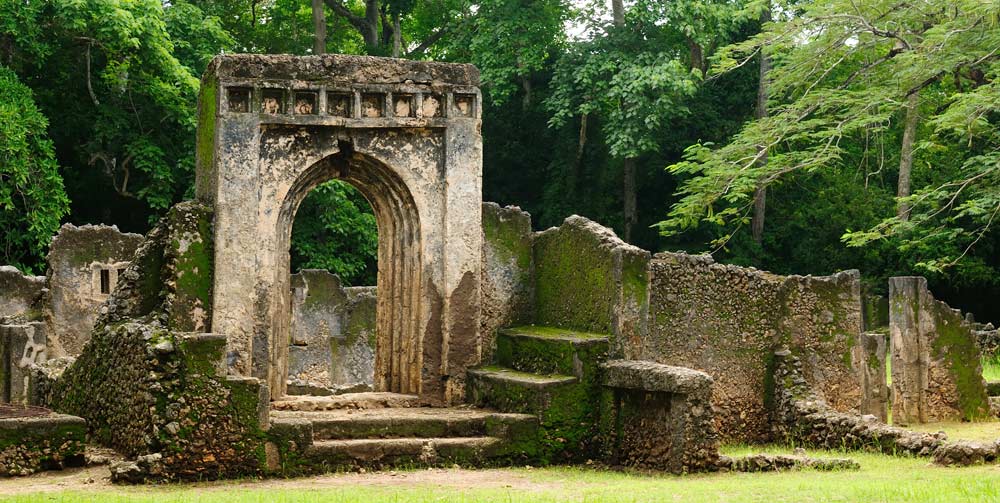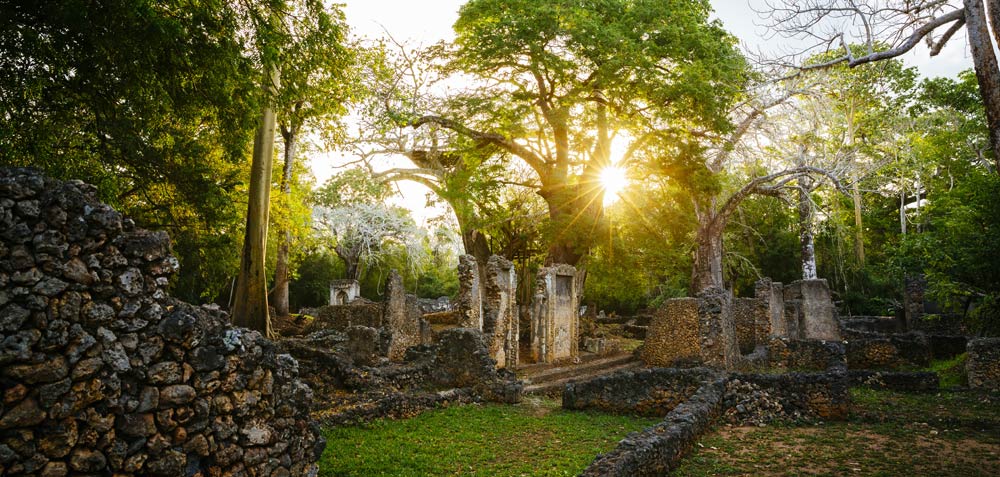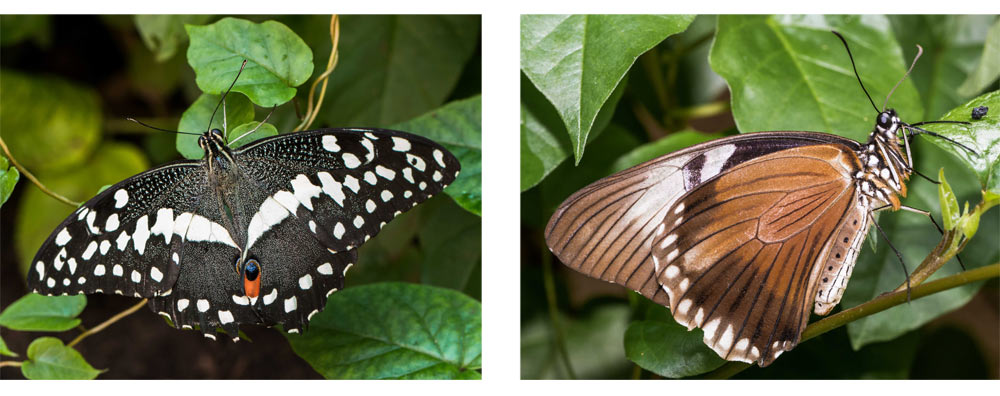Originally occupied in the late 11th or early 12th century, the ruins of the Swahili city of Gedi are located just 7 km north of Watamu. Ideal for an early morning or late afternoon visit, when you fancy a break from the beach, Gedi is deliciously cool and offers a fascinating insight into local history and ancient architecture.

Gedi – a flourishing city
Meaning ‘precious’ in the language of the local Galla people, Gedi is thought to have flourished in the mid-15th century. It hosted sultan’s palaces, sunken gardens, a fabulous selection of grand merchant’s houses, a large Friday mosque and some exquisite examples of Islamic pillar tombs. Many of the inhabitants – some 2,500 – were wealthy and powerful, benefiting from extensive trade with Arabia and China.
Then, in the 17th century, it was abandoned, some think quite suddenly. Theories abound as to why this happened: one being the presence of the Portuguese; another being that the residents fled in the face of an imminent invasion by the Galla, who were known to be cannibals.
Excavations of the ruins during the 1940-50s revealed an extensive array of domestic, religious and commercial structures. These included a palace with sunken courts, fortified walls and a deep well. Finds included glass and shell beads, gold and silver jewellery, coins, porcelain and local pottery.
Also uncovered was the earliest evidence for occupation at Gedi – a grave marker that has been dated to between 1041 to 1278. While the adoption of Islam by the inhabitants in the twelfth century is evidenced by the presence of three mosques in the northern area the city.
A sacred site

Today, the picturesque ruins are spread over 45 acres, dotted with ancient baobab trees and surrounded in dense coastal forest rich in birdlife and wildlife. The local Giriama, one of the Mijikenda tribes, view the site as a sacred and spiritual place. Many believe Gedi to be haunted by a strange ‘beast’ which stalks visitors as dusk falls.
The Historic Town of Gedi is also on the UNESCO World Heritage Site ‘tentative’ list.
The Gedi experience
A tour of the ruins – some 1.5km in length – will take around an hour. There are also some lovely walks away from the ruins through the thick forest where you might be fortunate enough to spot the endangered golden-rumped elephant shrew. For a bird’s eye view, the Arabuko–Sokoke Schools and Ecotourism Scheme has built an observation platform in a baobab tree overlooking the site.
Getting there: Just 7 km from Watamu and 15 km from Malindi, Gedi ruins is easily accessed by taxi or bus. The ruins are open 7am-7pm (a small entry fee is payable).
Kipepeo Butterfly Project
Immediately adjacent to Gedi is the fascinating Kipepeo Butterfly Project. Kipepeo means butterfly in Swahili and this community-based eco-farm offers an enchanting butterfly display house, with over 250 species. There is also an education centre showcasing the range of butterfly products.

Local farmers are able to earn a living from the nearby Arabuko-Sokoke forest by rearing butterfly and moth pupae for export to live exhibits and butterfly houses in Europe and America. The project also exports honey and silk cloth produced by the local community.
For further information: Kipepeo.org
© 2025 Kenya Holidays
